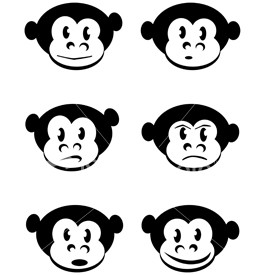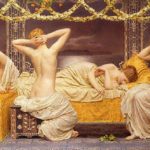 Music
Music  Music
Music  History
History 10 Less Than Jolly Events That Occurred on December 25
 Weird Stuff
Weird Stuff 10 Funny Ways That Researchers Overthink Christmas
 Politics
Politics 10 Political Scandals That Sent Crowds Into the Streets
 Weird Stuff
Weird Stuff Ten Bizarre Facts About The Doge Meme
 Our World
Our World 10 Ways Your Christmas Tree Is More Lit Than You Think
 Movies and TV
Movies and TV The 10 Coolest Stars to Set Sail on The Love Boat
 History
History 10 Things You Didn’t Know About the American National Anthem
 Technology
Technology Top 10 Everyday Tech Buzzwords That Hide a Darker Past
 Humans
Humans 10 Everyday Human Behaviors That Are Actually Survival Instincts
 Music
Music 10 Surprising Origin Stories of Your Favorite Holiday Songs
 History
History 10 Less Than Jolly Events That Occurred on December 25
 Weird Stuff
Weird Stuff 10 Funny Ways That Researchers Overthink Christmas
Who's Behind Listverse?

Jamie Frater
Head Editor
Jamie founded Listverse due to an insatiable desire to share fascinating, obscure, and bizarre facts. He has been a guest speaker on numerous national radio and television stations and is a five time published author.
More About Us Politics
Politics 10 Political Scandals That Sent Crowds Into the Streets
 Weird Stuff
Weird Stuff Ten Bizarre Facts About The Doge Meme
 Our World
Our World 10 Ways Your Christmas Tree Is More Lit Than You Think
 Movies and TV
Movies and TV The 10 Coolest Stars to Set Sail on The Love Boat
 History
History 10 Things You Didn’t Know About the American National Anthem
 Technology
Technology Top 10 Everyday Tech Buzzwords That Hide a Darker Past
 Humans
Humans 10 Everyday Human Behaviors That Are Actually Survival Instincts
Top 15 Tips for Spotting a Liar
Quite often a person feels the need to lie about something – if you are the person being lied to, there are a few simple tips for catching the liar out. This is a list of the top 15 tips.
Tips 1 – 5

1. Physical expression will be limited and stiff, with few arm and hand movements. Hand, arm and leg movements are toward their own body as the liar tries to take up less space.
2. A person who is lying to you will avoid making eye contact.
3. Hands touching their face, throat & mouth. Touching or scratching the nose or behind their ear. Not likely to touch his chest/heart with an open hand.
4. Timing is off between emotions gestures/expressions and words. Example: Someone says, “I love it!” when receiving a gift and then smiles after making that statement, rather then at the same time the statement is made.
5. Gestures/expressions don’t match the verbal statement, such as frowning when saying “I love you.”
Tips 6 – 10
6. Expressions are limited to mouth movements when someone is faking emotions (like happy, surprised, sad, awe, ) instead of the whole face. For example; when someone smiles naturally their whole face is involved: jaw/cheek movement, eyes and forehead push down, etc.
7. A guilty person gets defensive. An innocent person will often go on the offensive.
8. A liar is uncomfortable facing his questioner/accuser and may turn his head or body away.
9. A liar might unconsciously place objects (book, coffee cup, etc.) between themselves and you.
10. A liar will use your words to make answer a question. When asked, “Did you eat the last cookie?” The liar answers, “No, I did not eat the last cookie.”
Tips 11 – 15

11. A statement with a contraction is more likely to be truthful: “ I didn’t do it” instead of “I did not do it”
12. Liars sometimes avoid “lying” by not making direct statements. They imply answers instead of denying something directly.
13. The guilty person may speak more than natural, adding unnecessary details to convince you… they are not comfortable with silence or pauses in the conversation.
14. A liar may leave out pronouns and speak in a monotonous tone. When a truthful statement is made the pronoun is emphasized as much or more than the rest of the words in a statement.
15. Words may be garbled and spoken softly, and syntax and grammar may be off. In other-words, his sentences will likely be muddled rather than emphasized.
Source: Blifaloo









